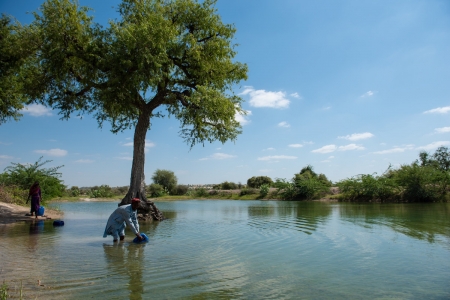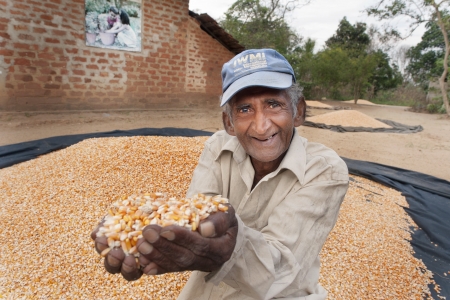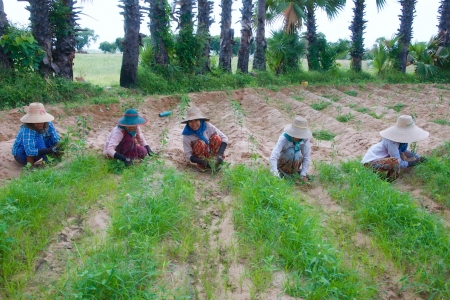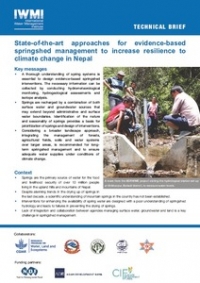Nestling in the Himalayan region, now acknowledged as the third-pole of the Earth, 80% of Nepal’s landscape comprises of mountains, hillsides and watersheds that feed over 4000 rivers. To the 13 million people who inhabit the upper watershed regions, springs are the primary source of water. So why is it that, in this ‘water rich’ country, the residents are grappling daily to access their minimum requirement of water?
Rejuvenation of springs is crucial for building climate resilience. To better understand the dynamics, the International Water Management Institute (IWMI) undertook a five-year study named BCRWME - Building Climate Resilience of Watersheds in Mountain Eco-regions. The objective of BCRWME was to closely study spring hydrology, i.e. the processes that recharge springs, in order to make recommendations, to better plan watershed interventions, that are targeted at recharging springs. Project interventions included afforestation, infiltration recharge ponds, small storage tanks, and bioengineering for gully protection. And it strived to provide access to more reliable water sources to approximately 45,000 household mountain communities.
Alongside interventions, IWMI has been leading research to develop a scientific understanding of mountain springs.
Factors responsible
Drying up of springs are caused by multiple factors including impacts of climate change but also changes in land-use, such as deforestation, overgrazing, abandonment of agricultural land and urbanization. Furthermore, geology, topography, climate and land-use also directly affect the formation of springs and the nature of their water availability.
The problem, however, is that interventions done in one particular watershed don’t always guarantee the revival of those springs in the same watershed. This is due to sub-surface hydrology. Some springs are fed mainly by ground water, while others are nourished by direct precipitation, and rest by a mix between the two. Hence, understanding the typology of springs is vital in identifying the most appropriate combination of interventions.
A science-based approach
How does science-based approach help ‘spring’ the drying springs of Nepal back to their former life sustaining form? There is of course no panacea, and the right solution lies in the right combination of land and water management practices, reinforced by long-term collaboration between local communities and government agencies responsible.
“We recommend a larger landscape approach. Try to integrate the management of all natural resources, including land, trees, forestry, and people of course, and move away from sectorial management”, says Dr. Luna Bharati, Principle Researcher at IWMI, who further adds that “Ground water resources and surface water resources must be integrated, as spring flow is a part of ground water, surface flow continuum.”.
This video makes a strong case, as to why only an integrated approach can offer a more sustainable and long-term solution for upper watershed management.
IWMI worked on BCRWME with the Nordic Development Fund (NDF), the Asian Development Bank (ADB), and the Department of Forest and Soil Conservation (DoFSC) of the Government of Nepal. The Climate Investment Funds (CIF) funded the project.









Comments
Quite interesting, will follow to learn more about management approaches based on natural solutions. I believe technological intervention has less to do. Because it is important that how people of Nepal are going to change practices to restore potential of these springs which are not only resource but a lifeline in the light of findings of IWMI